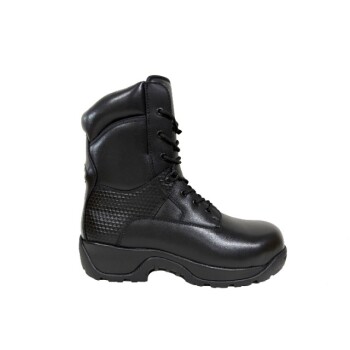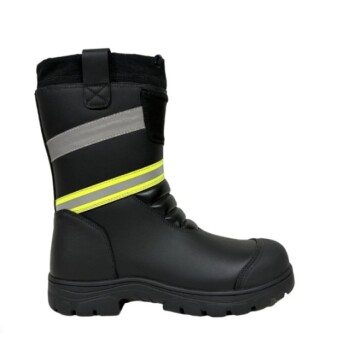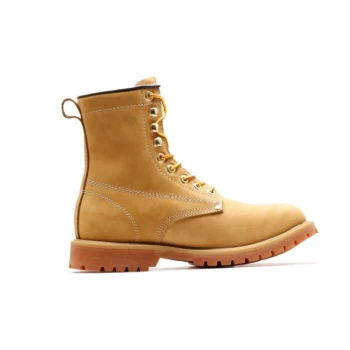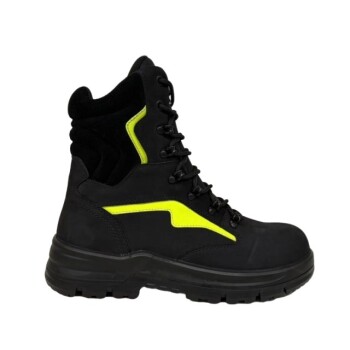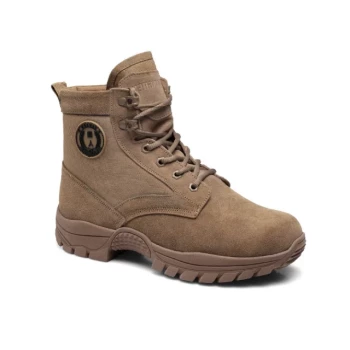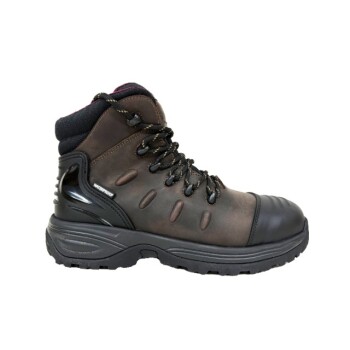To make your current shoes more non-slip, you can physically alter the sole to create more texture. The most common DIY methods involve lightly scuffing the bottom of the shoe with coarse sandpaper or a file to increase its roughness or applying a dedicated grip-enhancing spray designed to add a temporary tacky layer to the sole.
While quick fixes can offer a minor, short-term increase in grip, they are not a substitute for the engineered safety of true non-slip footwear. Understanding the difference between a temporary modification and a purpose-built design is critical for ensuring reliable safety.
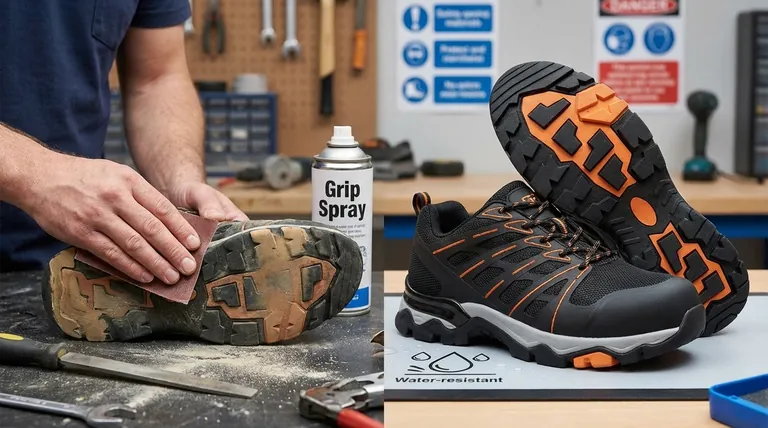
DIY Methods for Temporary Grip
If you need a quick, temporary solution for a specific pair of shoes, a few methods can provide a marginal improvement in traction. These are best for casual use, not for high-risk environments.
Scuffing the Soles
Scuffing a smooth, new sole creates more surface area and texture. By using coarse sandpaper or a metal file, you can rough up the areas of the sole that make the most contact with the ground. This abrasion creates small grooves and pits that can offer slightly better hold.
Applying Grip Sprays
There are commercially available sprays specifically designed to increase the tackiness and traction of shoe soles. These products apply a sticky, rubberized coating that can temporarily improve grip, but they wear off with use and may need frequent reapplication.
Why Professional Non-Slip Shoes Are Superior
True slip-resistant shoes are not just regular shoes with a rough bottom; they are an engineered piece of safety equipment. The difference lies in materials and design principles that DIY methods cannot replicate.
The Science of Sole Material
Professionally made non-slip shoes use soft rubber compounds specifically formulated to provide a high coefficient of friction. This material is designed to grip microscopic imperfections in a floor's surface, even when wet or oily.
The Importance of Tread Pattern
The most critical feature is the tread pattern. These are not just random designs; they are intricate channels engineered to push liquids out from under the shoe's sole. This prevents a layer of water or oil from forming between the sole and the floor (a phenomenon known as hydroplaning), ensuring direct contact and a firm grip.
Understanding the Limitations
Relying on DIY modifications comes with significant trade-offs that you must consider, especially if your safety is on the line.
DIY Fixes Are Not Permanent
Scuffing the sole wears down with walking, and grip sprays rub off quickly. These methods require constant maintenance and cannot be considered a reliable, long-term solution.
They Are Not a Substitute for Safety-Rated Footwear
In an occupational setting (like a restaurant kitchen or hospital) where slip resistance is a requirement, DIY methods are inadequate. Certified non-slip shoes have been tested to meet specific safety standards that a modified shoe cannot guarantee.
Making the Right Choice for Your Situation
Your approach should be determined by your environment and how much you depend on your footwear for safety.
- If your primary focus is a quick fix for a single event on a dry surface: Lightly scuffing a new, slick sole can provide a small confidence boost.
- If your primary focus is reliable, all-day safety in a wet or hazardous environment: Purchasing shoes explicitly labeled and certified as "slip-resistant" or "non-slip" is the only dependable choice.
Ultimately, your safety depends on using the right tool for the job.
Summary Table:
| Method | Best For | Key Limitation |
|---|---|---|
| Scuffing Soles | Quick, minor grip increase on dry surfaces | Not permanent; wears down quickly |
| Grip Sprays | Temporary tackiness for a specific event | Rubs off; requires frequent reapplication |
| Professional Non-Slip Shoes | All-day safety in wet, oily, or hazardous environments | Requires an initial purchase |
Don't compromise on safety. As a large-scale manufacturer, 3515 produces a comprehensive range of certified non-slip footwear for distributors, brand owners, and bulk clients. Our engineered soles with specialized rubber compounds and tread patterns are designed to push liquids away and provide reliable grip all day long.
Contact our team today to discuss your non-slip footwear needs and ensure the safety of your workforce.
Visual Guide

Related Products
- Premium KPU Injection Athletic Style Safety Shoes
- Wholesale Anti-Smash & Puncture-Proof Safety Shoes Custom Manufacturing for Brands
- Custom Wholesale Leather Safety Boots Direct Factory Manufacturing
- Premium Wholesale Wheat Nubuck Safety Boot with Rapid Lacing System
- Customizable Anti-Smash Safety Boots for Wholesale & Private Label Manufacturing
People Also Ask
- What is the purpose of puncture-resistant footwear? Protect Your Feet from Sharp Hazards
- What is the importance of ASTM International in safety footwear standards? Ensure OSHA Compliance and Worker Safety
- Why is safety the top priority when selecting oilfield work boots? Essential Protection for High-Risk Environments
- Does allowing employees to wear steel-toe rubber boots offsite exempt the employer from payment? Understand OSHA's specialty PPE rules.
- Why is expert help recommended when selecting safety shoes? Ensure Perfect Fit & Hazard Protection







